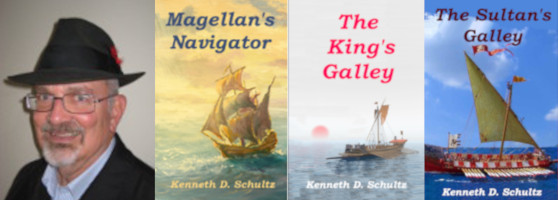Nearly five months after taking winter refuge in Porto San Julian harbor on the stark Patagonian coast, Magellan and his men were sick of the place. Their stay started off poorly with the mutiny, which had led to the death of three men, one a trusted officer plus two of the mutineers. Ironically, here fifty-eight years later Francis Drake would also execute one of his captains for mutiny. This was done near the gibbet where the remains of Magellan’s drawn and quartered captains were exhibited. It is said that a cooper of Drake’s ships cut up Magellan’s gibbet and carved drinking cups from it. For me personally, it would have ruined the taste of any wine drunk from them.
The enclosed harbor of San Julian offered them excellent protection from the winter gales that swept through, but little else. The only available water was brackish. Game and fish were limited. Apparently, they had little success hunting the fleet rhea and guanaco that lived in the surrounding hills. I believe that during their stay their food stores continued to dwindle…and they still had miles upon miles to sail once they got around the continent that blocked them.
Fortunately, while in an earlier exploration Serrano had lost his ship, the little Santiago, he had discovered the River Santa Cruz a little south of San Julian. Santa Cruz offered fresh water and abundant game and fish.
And so, Magellan decided to move to Santa Cruz despite the southern hemisphere winter not yet being over. The fleet raised anchor on August 11, 1520 after first marooning Juan de Cartagena and a priest on an island in the bay along with ample food, wine, and swords. Cartagena was the third ringleader of the mutineers. Magellan had initially spared his neck from the fate of his fellow mutineer Quesada. It isn’t clear why he did this, although Cartagena had been appointed conjunta persona of the armada by King Charles, and was apparently the bastard son of Archbishop Fonseca, who oversaw the Spanish bureaucracy that oversaw all New World exploration. So, Cartagena had friends in high places. But then, before departure, Magellan all but killed Cartagena by marooning him. Once again, we don’t know the details, but apparently Cartagena was once again attempting to foment a mutiny. In the end, Cartagena got what he deserved after blundering again.
Despite marooning Cartagena on August 11th, the fleet didn’t actually leave San Julian until the 24th. Presumably the delay was due to problems with a ship or, more likely, bad weather. Two days later the armada arrived at Santa Cruz after two days of fighting stormy seas.
Compared to the austere San Julian, Santa Cruz was a land of milk and honey. The men got to work netting fish, killing seals and other game, and salting or smoking their meat for the voyage ahead. The armada stayed in Santa Cruz until spring came to the southern hemisphere.
